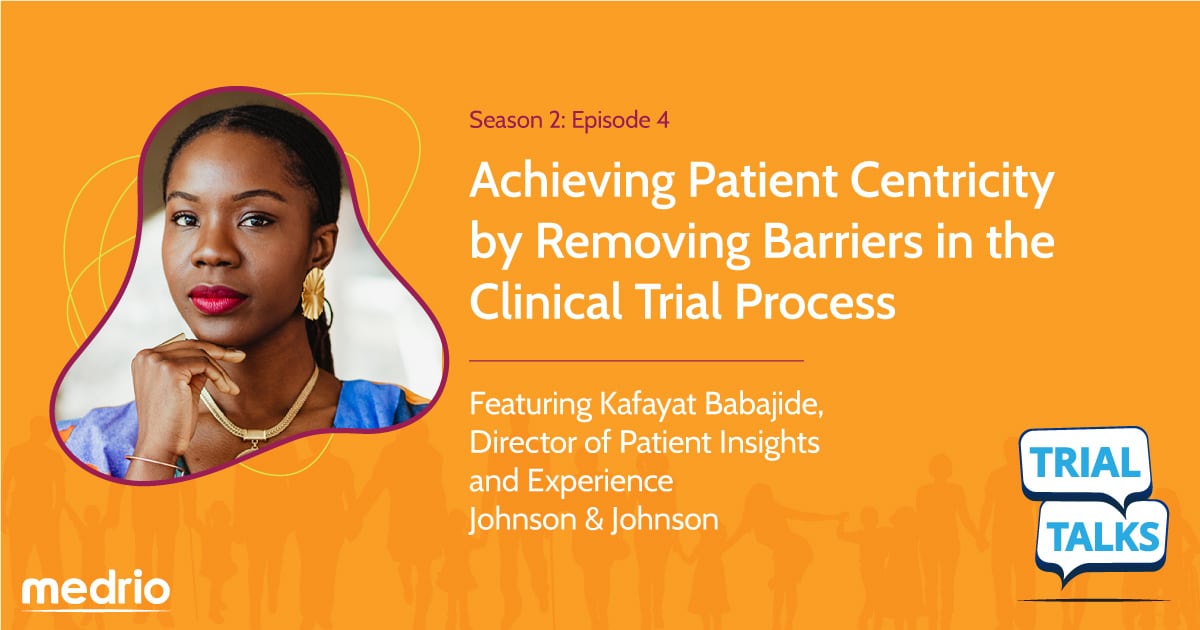Walk us through how you got involved in the patient side of things and what your experience has been like. [0:30]
My career in healthcare started out on the consumer health side of the business. And the consumer perspective was taught to us as something that needed to be integrated into the design, the development, deployment, and management of a product… And at Johnson and Johnson, our pharmaceutical sector is very invested in leveraging digital technology to advance treatment and drug development. So I was presented with an opportunity to apply my consumer learnings in pharma and developing software products meant to enhance patient engagement in clinical trials.
How are you applying your consumer experience in your current role? [4:00]
At the end of the day, every business whether it’s B2B, D2C, B2C services product has an end user and the best businesses put that end user first. Yes, it’s called an end user, but that doesn’t mean it’s the last thought or an after thought. You hear a lot about companies like Amazon who has Jeff Bezos who basically infused a culture of customer obsession being wildly successful because of it. And you wonder, “Okay, well, what does it mean to be customer obsessed?” It’s acknowledging that your consumer has a voice and then capturing and reflecting that voice in the design of your product experience. And I would say consumer centricity is no different from patient centricity because it is the same concept, just a different branding of the end user. Patients in clinical trials have a journey. They may be suffering from a disease for years, or they may have identified their disease very early on.
Where do you see the clinical trial process today as it relates to the patient’s point of view? [7:20]
Patients see the gear turning albeit very slowly. So just to dimensionalize that a little bit more, the advisory board meeting that I sat in on was basically a moment for me to work with patients who got to test out a product that we’re launching later this year. And a lot of the feedback was glowing. It was wonderful. But the feedback that I tended to fixate on was the constructive feedback… And in a lot of the feedback and the reviews patients were saying things that we know but we need to do a better job of acting on, which is essentially they are the unsung heroes in trials.
What barriers do you believe could or should be removed by implementing a patient centric approach? [10:00]
I would say the single most important barrier that a patient centric approach could help, if not remove at least mitigate, is a psychological barrier and its trust. Trust is a huge component. Again, these patients are already in a very emotionally volatile and tough journey and experience.
Do you view patient centricity as a piece of the puzzle for increasing diversity in clinical trials? And if so, how? [13:45]
Oh, absolutely… I think patient focus goes beyond just making sure that the numbers match up. It’s also about, A, understanding going back to that point of trust. How do we engender trust with these subsets and these demographics so that we can have better recruitment tools and we can ensure that these patients that they’re going to have a good experience that allows them to be seen and see themselves reflected in this clinical trial process? It’s also important to understand medical bias and the disparities to begin with, because if you don’t understand that there’s a disparity and disproportionality in the impact of a particular disease, you’re not even going to be thinking about how to appropriately diversify your patient population and recruitment tactics.
